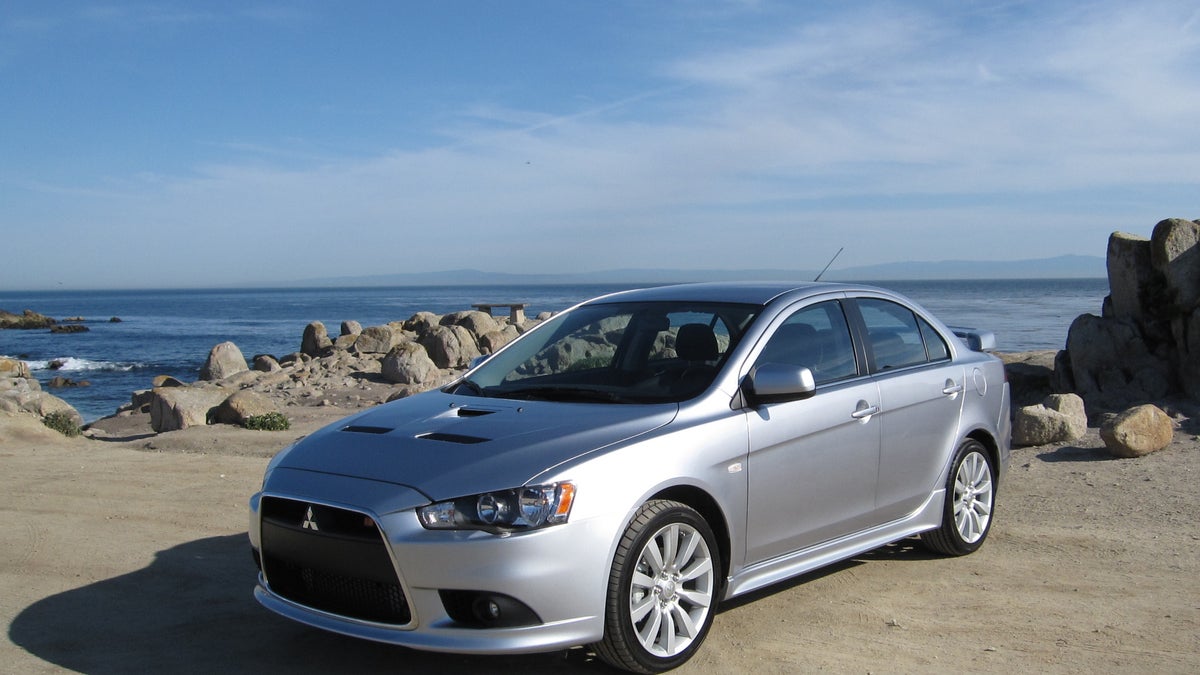2009 Mitsubishi Lancer Ralliart first take
CNET Car Tech takes the 2009 Mitsubishi Lancer Ralliart for a spin.

Mitsubishi left a large gap between its latest Lancer economy car and the Lancer Evo X, a street-legal professional-grade rally car based on the Lancer platform, both in terms of tech and price. For people who don't want to pay the 40 grand for an Evo X, but want something more fun than the base Lancer, Mitsubishi offers the Ralliart version.
The Lancer Ralliart uses a 2-liter turbocharged four cylinder engine, like the Evo X, but only produces 237 horsepower, 54 less than the Evo. Likewise, torque is at 253 foot-pounds, 47 less than the Evo. Although not as high-stepping as the Evo, we found the Lancer Ralliart delivered thoroughly satisfying performance on the road. The small displacement engine and performance programming make the power come on quickly, while turbo-lag is kept to a minimum by the transmission.
One of the big tech bonuses in the Lancer Ralliart is the standard dual clutch transmission, called Sport Shift Transmission (SST) by Mitsubishi. Essentially a manual transmission, it uses computer-controlled clutches to shift gears, eliminating the clutch pedal. This high tech transmission allows for two shift programs in the Lancer Ralliart (there are three programs in the Evo X), standard automatic shifting and sport shifting. In Sport mode, it holds low gears to keep the engine speed up, so the turbo is almost continuously engaged, meaning no spool-up time.
You can also choose manual mode for gear selection. Unlike the manual modes on most automatic transmissions, gear engagement feels hard and precise, as if you were shifting gears with a manually operated clutch. Another bonus of the SST is better fuel economy over an automatic transmission.
The Lancer Evo is also known for its all-wheel-drive system, which uses three differentials to minutely adjust torque around all the car's wheels, assuring that power is going to the wheels with the best grip on the road. To keep the Evo X in a class by itself, Mitsubishi used the previous generation all-wheel-drive system on the Lancer Ralliart. Like the engine tuning, most drivers won't feel the difference between the Lancer Ralliart's all-wheel-drive system and that on the Evo X. Both let you set the system for different surfaces at the push of a button.
Mitsubishi also makes the same cabin electronics package available in the Lancer Ralliart as can be found in the Evo X, a hard drive-based navigation system, an audio system that lets you rip CDs to the car's hard drive, and Bluetooth cell phone integration. The Bluetooth system doesn't offer many features, and is mostly good for receiving, rather than making, calls. The navigation system is fast, but lacks features like traffic information seen on newer units. We are impressed by the stereo, a loud Rockford-Fosgate system with a 10 inch subwoofer. It's not the most refined audio, but it pumps out the bass, and is nicer than the six speaker systems found in many cars.

